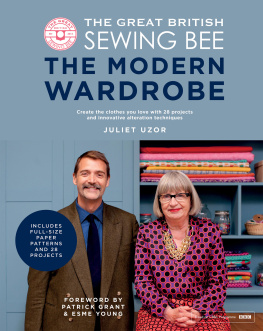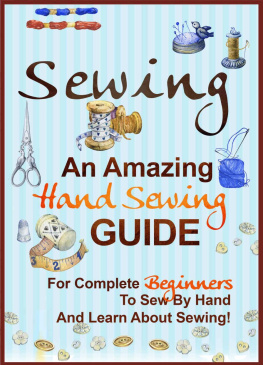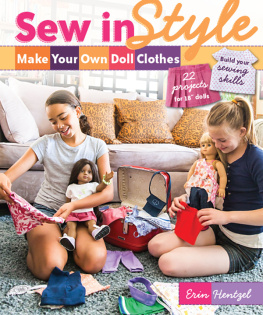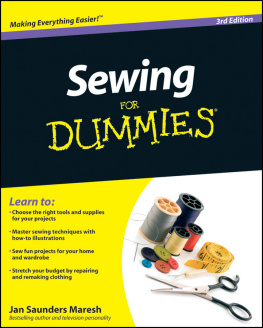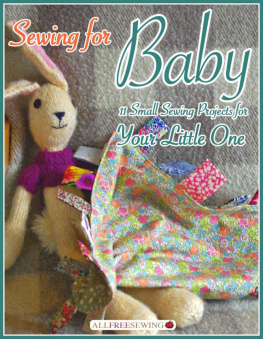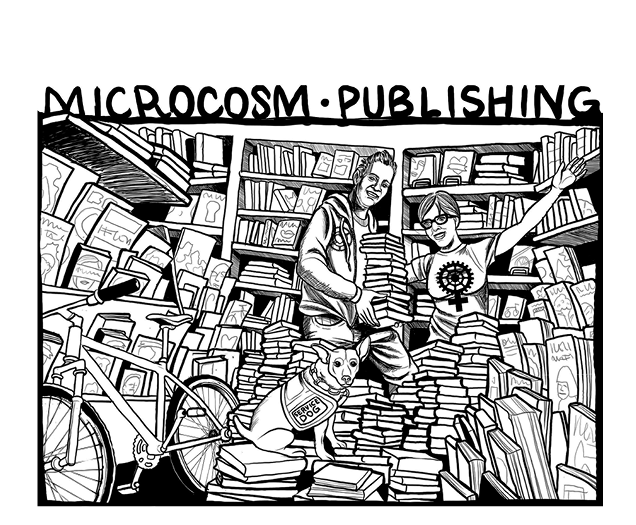Radical Sewing
Pattern-Free, Sustainable Fashions for All Bodies
Kate Weiss, 2021
This edition Microcosm Publishing, 2021
For a catalog, write or visit:
Microcosm Publishing
2752 N Williams Ave.
Portland, OR 97227
www.Microcosm.Pub
eBook ISBN 9781648410512
This is Microcosm #577
Edited by Lydia Rogue
Design by Joe Biel
Did you know that you can buy our books directly from us at sliding scale rates? Support a small, independent publisher and pay less than Amazons price at www.Microcosm.Pub
Microcosm Publishing is Portlands most diversified publishing house and distributor with a focus on the colorful, authentic, and empowering. Our books and zines have put your power in your hands since 1996, equipping readers to make positive changes in their lives and in the world around them. Microcosm emphasizes skill-building, showing hidden histories, and fostering creativity through challenging conventional publishing wisdom with books and bookettes about DIY skills, food, bicycling, gender, self-care, and social justice. What was once a distro and record label was started by Joe Biel in his bedroom and has become among the oldest independent publishing houses in Portland, OR. We are a politically moderate, centrist publisher in a world that has inched to the right for the past 80 years.
Did you know that you can buy our books directly from us at sliding scale rates? Support a small, independent publisher and pay less than Amazons price at www.Microcosm.Pub
FOR MY FAMILY, Dot, RuthAnn, Claire, Bev, and Yenny, the craftiest women I have ever known.
AND FOR MY DARLING M, without you, none of this is possible.
Contents
Introduction
The Necessities
Basic Techniques
Machine Sewing
Sewing by Hand
Measuring Your Body
The Politics of Clothing
Modifying Your Existing Wardrobe: Pants or Skirts
Fit
Closures
Adjustments for Seated Bodies
Fixing Holey Pants: Mending
Converting to Cargo Pants: Adding Pockets
Expanding Your Wardrobe
Cloning Your Clothes
Making New Clothes from Scratch
Basic Principles of Design
Working from a Pattern
Bonus Stash Busters
Conclusion
Basic Sewing Terms (Glossary)
Additional Resources: Pattern Companies, Websites, Books, & Suppliers
Acknowledgements
Bibliography
Things make us, as much as we make them.
Christine Checinska, curator at the Victoria and Albert Museum
The act of sewing should be, at its root, an act of resistance to fast fashion. They say fast, we say slow. They say more, we say less. They say perfection, we say process. They say competition, we say community.
Meg McElwee, creator of the Mindful Wardrobe Project
INTRODUCTION
W hen I was in my early 20s, my aunt passed away after a difficult illness. After her death, I inherited her old sewing machine. The heavy taupe beast was difficult to get from Minnesota to Kentucky, where I live, but it made it home in one piece. This sewing machine was the first I ever owned myself. It was the machine that taught me to sew and allowed me to produce the first clothes I ever made. I nicknamed her the Rocketeer for her space-age lines and slanting body. The old girl is solid and confident in herself and her abilities. She still has a reliable and steady dispositiona workhorse after more than fifty years of making seams. My particular model was produced between 1960 and 1962this was back when most sewing machines were made entirely from metal, domestically, and built to last beyond the lifetime of their owner with proper care and the occasional drop of oil.
When I inherited the Rocketeer, I had only sewn two things in a middle school home economics class: a small, lopsided patchwork quilt and a single pair of horrendous boxer shorts. The boxers were awful, they didnt fit, and I wore them only onceto school over a pair of pajama pants. The thing I remember most vividly about those first sewing lessons wasnt my experience learning to sew. But instead, was the drama of my classmate sewing right through her finger in the middle of class. She was sewing along at her machine and just didnt stop. The needle went through her fingernail and broke off in her index finger. She screamed. She bled. Someone might have fainted. It was not an auspicious introduction to the world of sewing.
If youre one of those folks that can dive right into a new thing with confidence or youve been sewing for years and cant remember a time when you didnt sew in your spare time, you can probably go ahead and skip the rest of this introduction. But if youre like so many of the people I talk to who have always kind of wanted to learn to sew but are intimidated, this note is for you.
It can be intimidating to begin practicing a new craft. Insecurities come up, frustrations, that little devil perfectionism gets in the way. First projects that go terribly wrong and cheaply built sewing machines can turn people off sewing forever. Or maybe you never found the time or had the resources to try. Or found a design that really spoke to your style and the type of clothing you want to wear.
But when someone notices lovingly homemade clothes it can spark a strong desire inside them. I watch the thoughts turning in their mind when they say they really like my purse or jacket and I let them know I made it myself. They have never tried, they tell me. It seems too scary, like visiting a different country and not speaking the language. Its just not a place they can go, they say. Heres the thing though. Sewing is for everyone. Sewing is real power and I want everyone to know it and get to experience what it feels like to wear a pair of pants you made yourself. It is magical. It will make you stand or sit taller, I swear.
It can feel like some people are born with the ability to create clothes from flat pieces of fabric. Maybe its Grandma, Mom, Dad, or a friend. It may seem that they have an intuitive understanding of shape and grading (well get into all the sewing lingo soon) and how to go from point A. a tube of knit fabric to point B. a cute t-shirt. But thats not how craft works. A to B is not a single ruler-straight line and it never will be. There are hundreds of steps and missteps, zigs and zags in between. Some projects will go great and others wont go well at all even after youve been sewing for years.
Sewing, like all craft, is a practice . One where perfection is a nice thing to aim for but wholly unnecessary and usually unachievable. And thats fine; its OK. Most of us arent the women from Playtex in charge of sewing spacesuits that would go to the moon, working under a 1/64 (.39 mm) margin of error and without the ability to rip out the seams and start again if they messed up. (A true story.)
When it comes to clothes, imperfect garments will still do their job: covering and protecting our body. while also projecting an identity. Clothes can fit well, keep the rain off your back, and keep all your private bits covered even if they have slightly wonky seams or mismatched plaids.
We all must begin a practice from a place of unknowing. There is no passport or paperwork or permission required to begin to sew. Like with grammar and learning a language, knowing the rules is helpful, but also not the only way to learn.
You can physically take apart a pair of pants seam by seam to see how all the pieces fit together. You can make one sleeve short and one sleeve long because that works best for you. You can sew an entire dress by hand for the meditative quality of handwork. You can make a regency petticoat or a loud and proud outfit for a drag show. You can embroider your back pockets with political messages. Hem one pant leg shorter than the other because you ride your bike every day and are tired of rolling it up. Or use velcro or magnets instead of buttons because different closures work better for you.
Next page

